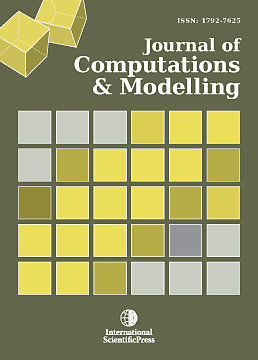Journal of Computations & Modelling
Mathematical Modelling of Cardiac Electrical Activity Using Bidomain Approach
-
 [ Download ]
[ Download ]
- Times downloaded: 11702
-
Abstract
In recent times, mathematical model of cardiac electrical activity has been recognized as one of the significant approaches capable of revealing diagnostic information about the heart. However, an efficient and accurate mathematical technique required for this modelling is one of the major problems in the field of biomedical research. This work presents mathematical modelling of cardiac electrical activity using bidomain approach. The cardiac electrical activity is best mathematically modelled coupled systems of ordinary differential equations and partial differential equations which are non-linear, stiff, and therefore difficult to solve numerically and implement. Hence, the bidomain model was adopted due to its ability to reflect the actual cardiac wave propagation. Explicit forward Euler method and 2-D network modelling were respectively used for time- and space-discretisation of the derived bidomain equations coupled with FitzHugh-Nagumo’s ionic equations to obtain linearized equations for transmembrane potential Vm, extracellular potential öĺ and gating variable w which are the main variables of interest. We implemented the linearized equations using code developed from Java 6.0 version to obtain the time characteristic of transmembrane potential Vm. The results of this work provide some insights into the nature of electrical wave propagation pattern in the normal cardiac tissue.
